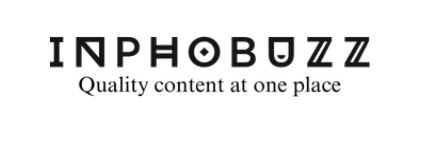Introduction
For
large corporations, supply chain management plays a significant role in
maintaining the timeliness of product delivery to the distributor or final
consumer. The traditional method of
supply chain management has been to keep a centralised headquarters while
having sub-offices for guidance. This allows the organisation to have the
time necessary to maintain the supply chain system. An organisation finds it
challenging to maintain a supply chain management system because of
transactional transparency, security traceability, product counterfeiting,
stockholder involvement, additional delays, instabilities, and other frauds.
Traditional vs. Modern supply chain
In
comparison to a conventional supply chain system based on a network and remote
access, a supply chain system based on the concept of moving commodities from
one location to another is very different. The conventional supply chain system
was based on a centralised approach, with two officers in charge of moving the
goods from their starting point to their final destination, where they will be
distributed to suppliers, retailers, or other parties.
Every
organisation needs a better supply chain system to ensure that their goods
arrive at their intended location, which could be either the final consumer or
one of the distributors who will sell them. Since maintaining a better supply
chain management system is crucial for every organisation. The supply chain
management system shouldn't be the only one used to distribute goods in the
direction of their destination, making it a challenging task for large
organisations.
However,
it is crucial that the goods or commodities be transparent so that the company
can be sure the final consumer is receiving a genuine and high-quality product.
Due to the brand identity that has been established among the public, quality
maintenance is crucial. Organizations that need to put forth a lot of effort on
the part of the management to determine which supply chain management system is
best.
Better supply chain network
Especially,
for large organisations, the extensive network used to ascend the product to
various locations around the world makes the supply chain system a one.
Particularly, numerous large-scale organisations, including Pepsico, Nestle,
Unilever, and others, exist. These other businesses, whose goods are routinely
distributed throughout the entire world. Since it is crucial for them to have a
sizable or enormous network based on the transparency of the way goods are
supplied and manifested in the results of the commodities or goods,
Alternatively,
there is a sophisticated supply chain system in use today that is based on a
network, where technology is involved and crucial data is present so that
thieves and other security issues can be raised. Blockchain offers multi-party
visibility across the supply chain and transparency for digital events. When organisations search for new technological
applications, they also work to enhance security, integrity, and visibility.
Competitive advantage through better supply chain
Numerous
efforts have been made by organisations to ensure that they are moving in the
direction of a better supply chain system within their organisation. The
majority of companies and organisations, however, agree that the supply chain
is essential to the success of the business as a whole. Because most companies
today rely on their ability to gain a competitive edge in the market or on
their ability to compete globally in order to successfully complete any project
involving any good or service.
It
is only possible when the organization's supply chain system is strong enough
to provide a better and more confident support system for the organisation to reach
the destination of the product and services before or on time so that the
stakeholders—the customers—are able to receive a timely supply of the commodities
or services.
As
a result, supply chain management is essential to the company's ability to
maintain its supply chain system. It's because the supply chain system doesn't
just depend on creating it, which depends on keeping up one location or office.
Instead, it is based on the sub-offices of the various destinations so that
they can get directions for removing the product further. There are a
variety of products available on the market that require different amounts of
maintenance to maintain a system's transparency.
Example
A number of businesses manufacture products related to technology,
such as cell phones, laptops, and other electronic devices. Similarly to this,
certain edible items, such as food and others, need to be maintained at the
proper temperature. The Final Destination of the company has a supply chain
system. When a product changes when it is transported to a new location or when
it receives new instructions.
Food
products and prescription medications are two examples of goods that must
arrive at their destination on time. However, they are unable to forecast
demand because various customers or other stakeholders are unsure of whether
they will receive the product on time or how to best store it.
Numerous
organisations, for instance, work in the paper or plastic manufacturing
industries because they need to be aware of the weather or climate change in
order for the finished product to reach the consumer in its original quality
and shape.
The
supply chain system refers to the movement of goods away from the manufacturing
organisation and toward the consumer. It is known as a network because it is
made up of independent or partially independent business entities that
distribute goods via a variety of retailers, manufacturers, and clients. In general, it relies on generation Sourcing in
coordination and proof, as well as the framework of the data required to make
the product exercises simpler. Since the first customer supply chain for
products or services was established during the early stages of the industrial
revolution.

.jpg)




0 Comments
If you have any suggestions, please comment